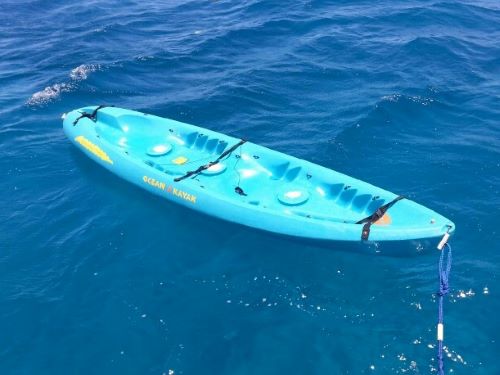
One of the most popular types of kayak hulls is the sit ON kayak (SOK) or sit-on-top (SOT) kayak.
There are several variations of the design, most of which share basic attributes. SOK hulls have certain advantages as well as disadvantages.
Sit on kayaks are practical for most applications. Many are durable enough to handle moderately rough water without sustaining damage.
The SOK hull is especially popular in applications where the occupant needs to exit the craft repeatedly. Sit on kayaks are usually equipped with one or two top mounted seats.
Sit on kayaks offer several advantages when it comes to fishing. Since the angler is supported on top of the craft, designers are free to mold accessories into the hull.
Integral features found on sit on kayaks may include rod holders, storage areas and other conveniences. Traditional sit on kayaks are usually propelled by simple double-bladed paddles.
Mechanically driven sit on kayaks are another option. Popular models include pedal driven kayaks that utilize fins or propellers, or motorized versions.
A specialized variation of the sit-on kayak hull design is the stand-up kayak. Stand up kayaks feature pontoons that swing out while fishing. When deployed, the pontoons give the kayak enough stability to allow an angler to stand and fish.
On most stand-up kayaks, a leaning post is used to provide extra stability while fishing. Stand up kayaks are useful for sight casting in clear shallow areas, as a fly-fishing platform, or other situations where standing is important.
As with all watercraft, sit on kayaks have a number of disadvantages. They tend to be wetter than sit in models. Since occupants and equipment are located higher, they can be less stable. To increase stability, designers often widen sit on models, which improves stability but results in a slower craft.